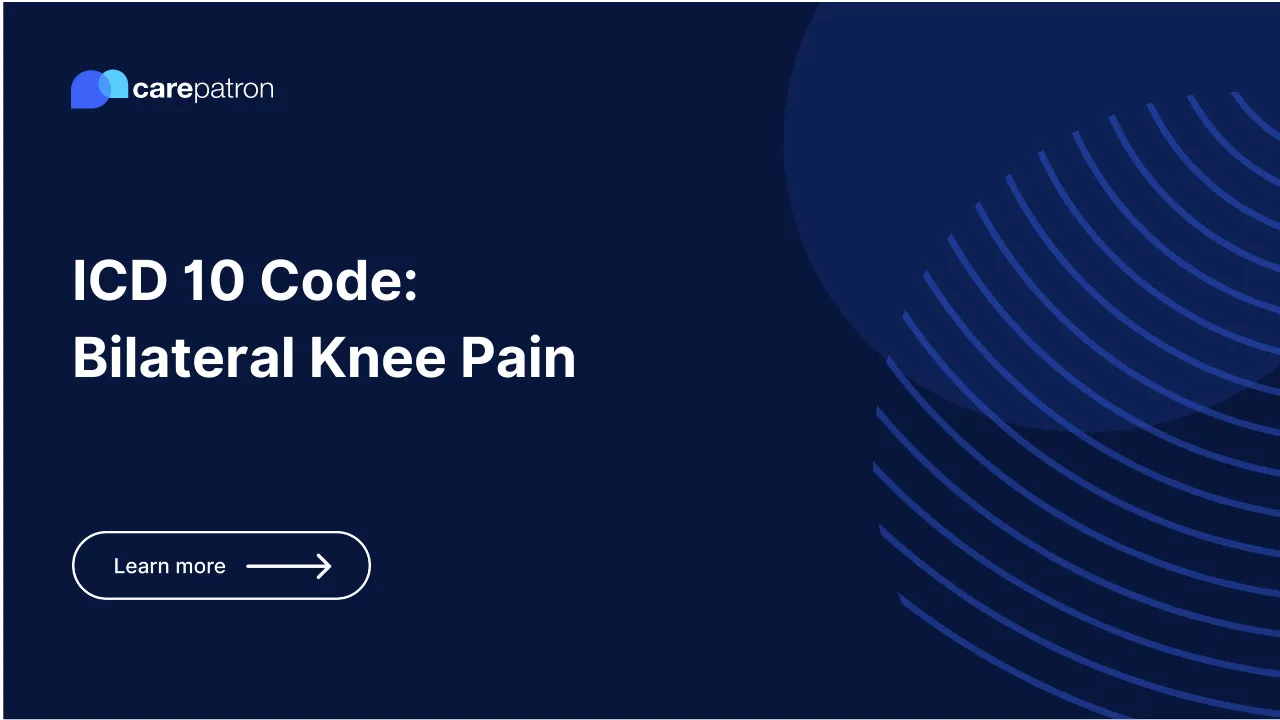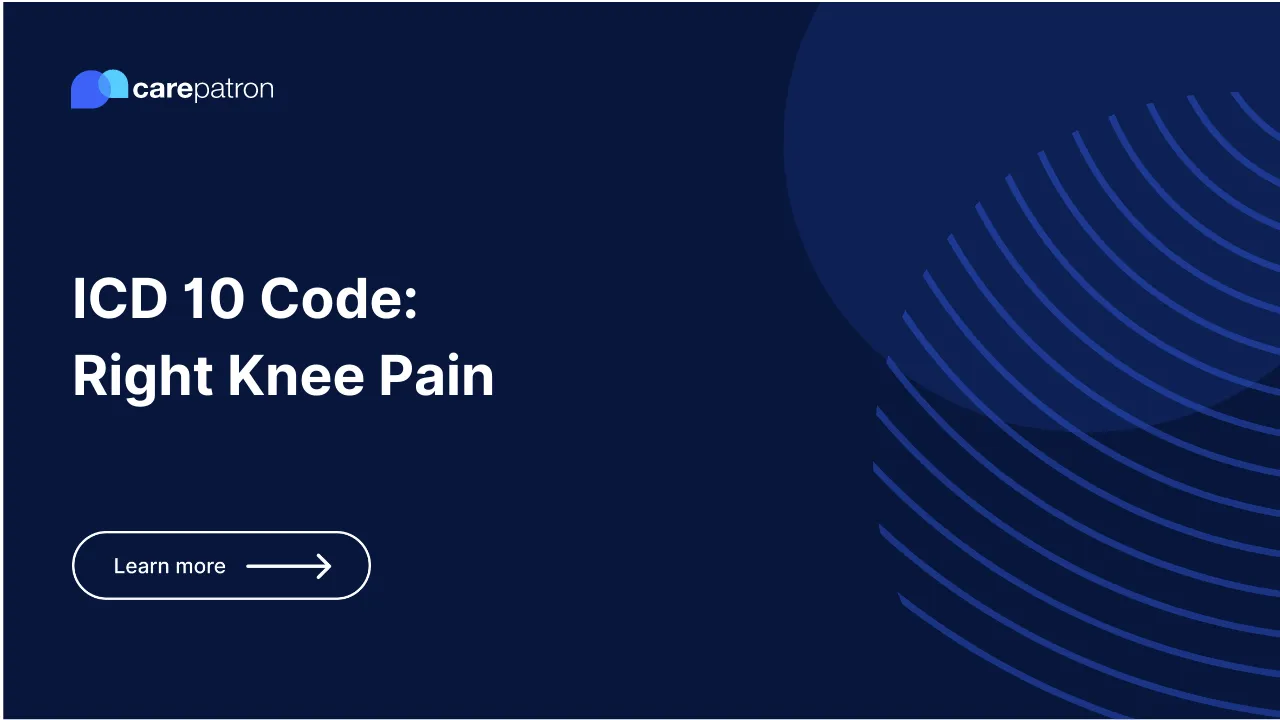Osteoporosis ICD-10-CM Codes
Explore ICD-10 codes for osteoporosis. Learn when they're billable, their role in diagnosis, and associated treatments.

What ICD-10 Codes are Used for Osteoporosis?
Osteoporosis is a medical condition affecting millions worldwide, leading to decreased bone density and an increased risk of fractures. In healthcare, understanding this disease and its related ICD-10 codes is crucial for accurate diagnosis, treatment, and billing.
The International Classification of Diseases, 10th Revision (ICD-10), is a global standard for reporting diseases and health conditions. It allows every health condition to be assigned a unique category and given a specific code. Here are some of the commonly used ICD-10 codes for osteoporosis:
- M81.0 - Age-related osteoporosis without current pathological fracture: This code is typically used when a patient has been diagnosed with osteoporosis due to aging. No current fracture due to the disease is present in these cases.
- M80.0 - Age-related osteoporosis with current pathological fracture: This code is utilized when an older patient has osteoporosis and a fracture resulting from the disease.
- M81.8 - Other osteoporosis without current pathological fracture: This code applies to patients with types of osteoporosis not classified elsewhere, and there is no current fracture due to the disease.
- M80.8 - Other osteoporosis with current pathological fracture: This code is used for patients with other types of osteoporosis (not classified elsewhere) and a fracture resulting from the disease.
- Z13.820 - Encounter for screening for osteoporosis: This code is used when a patient is undergoing screening for osteoporosis, but the disease has not been diagnosed.
- M80.00XA - Age-related osteoporosis with current pathological fracture, unspecified site, initial encounter for fracture: This code is used when a patient has age-related osteoporosis with a recent fracture at an unspecified site. The code is specifically for the initial encounter with the fracture.
To further understand and visualize the application of these codes, watch the following explainer video.
In the complex medical billing and coding world, understanding Osteoporosis ICD Codes is imperative. Not only does it ensure accurate record-keeping and billing, but it also helps in understanding the prevalence and impact of this condition. It's a complicated system, but with the right resources and knowledge, it can be effectively navigated for the benefit of healthcare providers and patients.
Which Osteoporosis ICD codes are Billable
Billable codes justify admission to an acute care hospital when used as a principal diagnosis. Here's a list of commonly used Osteoporosis ICD-10 codes and their billable status:
- M81.0 - Age-related osteoporosis without current pathological fracture: Yes, this is a billable code.
- M80.0 - Age-related osteoporosis with current pathological fracture: Yes, this is a billable code.
- M81.8 - Other osteoporosis without current pathological fracture: Yes, this is a billable code.
- M80.8 - Other osteoporosis with current pathological fracture: Yes, this is a billable code.
- Z13.820 - Encounter for screening for osteoporosis: Yes, this is a billable code.
- M80.00XA - Age-related osteoporosis with current pathological fracture, unspecified site, initial encounter for fracture: Yes, this is a billable code.
Clinical Information
Osteoporosis, a condition that weakens bones and makes them fragile, is a significant health concern worldwide. Here are some key clinical facts about this disease:
- Nature of the Disease: Osteoporosis is characterized by decreased bone density, leading to an increased risk of fractures. The most common sites for these fractures are the hip, wrist, and spine.
- Symptoms: Osteoporosis often doesn't present symptoms until a fracture occurs. Some might experience back pain caused by a fractured or collapsed vertebra, loss of height over time, a stooped posture, or a bone that breaks much more easily than expected.
- Risk Factors: Numerous factors increase the risk of developing osteoporosis, including aging, being female, menopause, low body weight, family history of osteoporosis, certain medications, and lifestyle choices such as tobacco use and excessive alcohol consumption.
- Prevalence: Osteoporosis affects millions of people worldwide. Women are more likely to develop osteoporosis than men, especially post-menopausal women.
- Diagnosis and Testing: The diagnosis of osteoporosis involves a medical evaluation, including a complete medical history, x-rays, and bone density testing. The bone mineral density (BMD) test is a key tool in identifying the disease and determining the risk of fractures.
- Treatment and Prevention: Osteoporosis treatment strategies aim to prevent or slow bone loss and reduce fracture risk. These can include lifestyle changes, such as quitting smoking and limiting alcohol intake, increasing physical activity, ensuring adequate calcium and vitamin D intake, and taking prescribed medications when necessary.
- ICD-10 Codes: The ICD-10 codes for osteoporosis (M80-M82) are used in medical billing and coding to specify the diagnosis. They provide information about the type of osteoporosis, whether there is a current pathological fracture, and the specific fracture site, if applicable. These codes are crucial for accurate record-keeping and insurance reimbursement.
Commonly asked questions
Osteoporosis ICD codes are used by healthcare providers when a patient has been diagnosed with osteoporosis. These codes provide a standardized way of recording and reporting this diagnosis, essential for medical records and insurance claims. They can also be used for patients screened for osteoporosis or with a history of the disease.
Treatment for osteoporosis often includes lifestyle changes, such as increasing physical activity and ensuring an adequate intake of calcium and vitamin D. In some cases, medication may be prescribed to slow bone loss and prevent fractures. The specific ICD-10 code used for an osteoporosis diagnosis does not determine the treatment plan; it merely helps to record and track the condition accurately.
A diagnosis code for osteoporosis provides a standardized way of indicating that a patient has been diagnosed with this condition. Different codes represent different types and stages of osteoporosis, such as whether a fracture has occurred and whether the osteoporosis is related to aging or other factors. These codes are used in medical records and insurance claims, and they help healthcare providers track the prevalence and treatment of osteoporosis.


.png)




.webp)
.webp)
.webp)
.webp)
.webp)
.webp)
.webp)
.webp)
.webp)
.webp)
.webp)
.webp)
.webp)
.webp)
.webp)
.webp)
.webp)
.webp)
%2520(1).webp)
.webp)
.webp)
.webp)
.webp)
.webp)
.webp)
.webp)
.webp)
.webp)
.webp)
.webp)
.webp)
.webp)
.webp)
.webp)
%2520(1).webp)
.webp)
.webp)
.webp)
.webp)
.webp)
.webp)
.webp)
.webp)
.webp)
.webp)
.webp)
.webp)
.webp)
.webp)
.webp)
.webp)
.webp)
.webp)
.webp)
.webp)
.webp)
.webp)
.webp)
.webp)
.webp)
.webp)
.webp)
.webp)
.webp)
.webp)
.webp)
.webp)
.webp)

.webp)
.webp)
.webp)
.webp)
.webp)













.webp)
.webp)




.webp)


